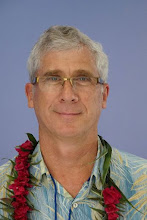"And now for something completely different"!
Yours truly has agreed to review several of the books in the Traditions of Christian Spirituality series. This provides a great opportunity to discuss some of the great spiritual traditions which surrounded the Celtic tradition including the Benedictine, Augustinian and Dominican to name just a few! So stay turned for some Continental overviews as we step out of the Celtic world for a bit.
But as you would expect, I must begin these reviews with the book on the Celtic tradition.
Journeys on the Edges (2000) is part of the Traditions of Christian Spirituality series by Orbis books. As indicated in other reviews in this series, the overall aim is to reveal the breadth and depth of Christian spirituality. Journey on the Edges (JOE) highlights the unique contribution of the Celtic tradition and primarily focuses on Ireland although readers will be aware that the Celtic tradition extended throughout Britain and into Europe, making headway even into Italy.
The title is appropriately selected, for as I read and re-read JOE I felt as if I was on a journey and the book moves at a fast pace. First, the author dispels some of the popular misconceptions surrounding Celtic spirituality. JOE debunks the notion that there was ever a unique Celtic spirituality or even a unique “Celtic Church’ which some writers believed grew apart from the Roman Catholic Church. Then O’Loughlin discusses some of the key elements to the Celtic point of view. From St.Augustine the Celts received a sacramental view of the earth and universe. From Eucherius they learned of monastic model of tranquility and from Cassian they learned principles of desert spirituality. Clearly, these monastic, desert values fit in well to the rural calm throughout most of Ireland and the model flourished.
The book then moves on to discuss how many Celtic writers thought of themselves as living of the edge of the world, and of time itself, far away from Rome, the then center of the known world. Anyone who has travelled in Ireland or the Scottish Highlands or islands even today, can understand this sense, of remoteness and timelessness. Try and what that sense of remoteness was like over 1500 years ago!
Other sections of the book discuss key figures and subjects such as the medieval philosopher Eriugena; St. Patrick; St. Brendan; the contribution of penance to Catholic theology; and a discussion of some sermons to assist us to understand the mind of that time. O’Loughlin remarks; “we see a particular vision of the Christian life coming into focus. It is one which finds echoes of the divine order in the human body and external world, and it sees a pattern for life in the earthly life of Jesus. Here the sacramentalism found in learned monastic texts has been brought into the common currency of preaching to women, men and children on a Sunday” (131). What is particularly surprising here-and in contrast to Latin Christianity-is that the divine order is linked with both the human body and the physical world. And here I think lies some of the major contributions of the Celtic spirituality-a spirituality of the body and the physical world-not just of the mind and intellect!
I like this book, it surprises me as I turn the pages and touches on subjects I do not see cited in other books on Celtic spirituality. JOE is not what I expected but I say that in a good sense for I feel it tried to fill in some of gaps which exist in Celtic studies.That being said, JOE has the feel of an academic book, and is a probably best fitted for college or graduate students.




No comments:
Post a Comment